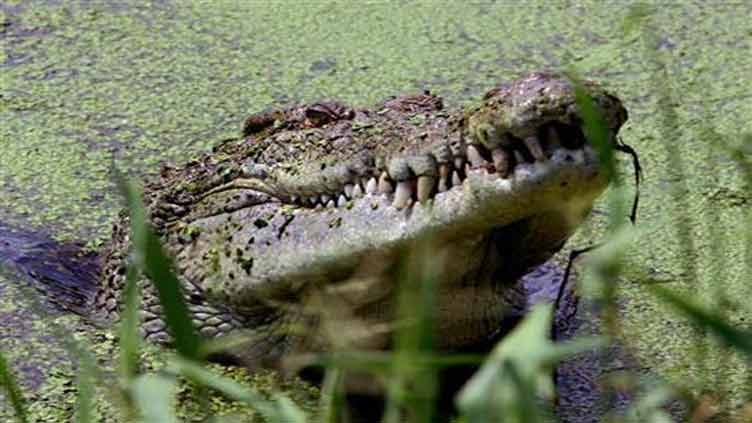Crocodile makes herself pregnant in first known virgin birth case related to reptiles

WeirdNews
The fully-formed foetus was stillborn and thus did not hatch
COSTA RICA (Web Desk) – In a first of its kind known case in the reptile species, a crocodile made herself pregnant despite being isolated having no contact with males.
The latest virgin birth case surfaced at a zoo in Costa Rica as a fully-formed foetus was discovered inside one of her eggs. Later, it was confirmed that it had no father as the foetus was 99.9 per cent genetically identical to the mother. However, the fully-formed foetus was stillborn and thus did not hatch.
It was an 18-year-old female American crocodile at Parque Reptilania that laid the egg in January 2018.
Virgin births, or parthenogenesis, have been documented in birds, lizards, snakes and fish, but never before in crocodiles.
Reports say seven of the eggs appeared to be viable and were incubated but when none hatched after three months they were opened. One contained a stillborn crocodile foetus.
The details have been public after the findings by researchers from Virginia Tech, who analysed the foetus, were published in the Royal Society’s journal Biology Letters.
According to the researchers, it is not uncommon for captive reptiles to lay clutches of eggs, given the period of isolation from mates, these would normally be considered non-viable and discarded.
They added that given that (virgin births) could occur in the presence of potential mates, similar instances might be missed when reproduction occurred in females co-habited with males.
Moreover, the scientists said the discovery offered tantalising insights into the possible reproductive capabilities of extinct relatives of crocodiles, particularly dinosaurs.
''The fact that the mechanism of parthenogenesis is the same in so many different species suggests that it is a very ancient trait that has been inherited throughout the ages. So this supports the idea that dinosaurs could also reproduce this way.”







